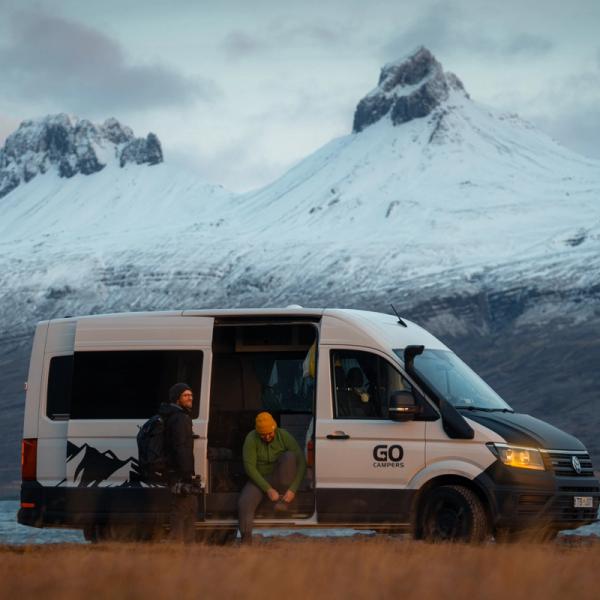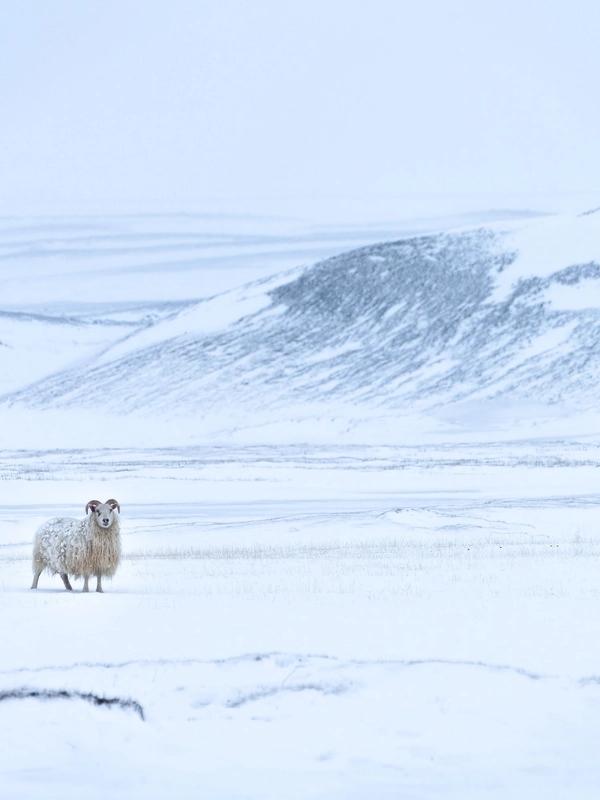
Iceland's Weather in January: What to Expect & How to Prepare in 2026
Iceland in January is the real deal when it comes to winter. It's cold, dark, and sometimes stormy, but it's also incredibly beautiful with snow-covered landscapes and amazing chances to see the Northern Lights. If you're planning a trip during this coldest month, here's what you need to know about the weather and how to get ready for it.
Key Takeaways
- Temperatures: Usually -1°C to 3°C (30°F to 37°F) in Reykjavík, a bit colder up north
- Daylight: Only about 4-5 hours in early January, growing to around 7 hours by month's end
- Precipitation: Happens a lot, mostly snow in the north. The south is a mix of rain and snow
- Wind: Often strong, making it feel much colder than the actual temperature
- Roads: Can be icy and unpredictable, with some areas you just can't reach
- Northern Lights: Great chances to see them, thanks to the long, dark nights
Overview of the Weather in Iceland in January
January sits right in the middle of winter in Iceland. Despite what the country's name suggests, coastal areas aren't as freezing as you might think, thanks to the North Atlantic Ocean. Still, it's definitely winter: cold, dark, and often stormy.
What makes Iceland's January weather stand out isn't the extreme cold (it rarely gets as cold as Canada or Minnesota), but rather the combination of near-freezing temperatures, strong winds, frequent rain or snow, and very little daylight.
The Gulf Stream keeps the island warmer than you'd expect for a place so far north, but don't be fooled, January weather can be tough and changes quickly. You could start your morning with clear skies and end up in a snowstorm by afternoon.
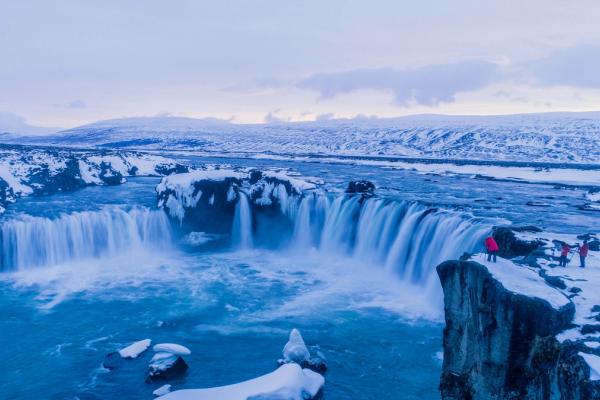
Temperatures in January
January is Iceland's coldest month. In Reykjavík and the southwest areas, daytime temperatures usually reach about 2-3°C (35-38°F), while nights drop to around -2°C (28°F).
Head north to Akureyri, and the temperature drops. Daytime temperatures there hit around 0-3°C (32-37°F), with nights dropping to -5°C to -4°C (23-25°F). During cold snaps, it can get much colder, especially up north and inland, where temperatures can drop to -15°C (5°F) or even lower.
The real issue is wind chill. Strong winds can make a 0°C day feel like -10°C or colder, so it often feels way worse than what the thermometer shows.
Regional differences are pretty big:
- Reykjavík (Southwest): Mildest, with highs around 2-3°C (35-38°F)
- Akureyri (North): Colder, with highs around 0-3°C (32-37°F)
- East Fjords: Similar to the north, often with lots of snow
- Highlands: Coldest, with temps well below freezing
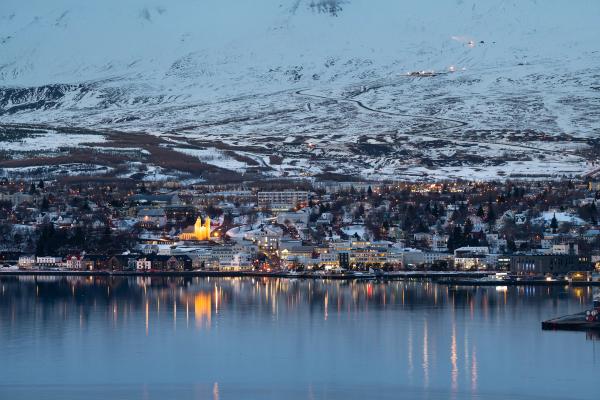
Rain & Snow in January
You'll likely see plenty of wet weather in January, as it's one of Iceland's wetter months. What type of wet depends on where you are.
In Reykjavík and along the south coast, you'll probably get a mix of rain, snow, and sleet. The capital gets about 75-80mm (3 inches) of precipitation over 15-20 days of the month. Since it's a bit milder there, snow might not stick around between storms.
Northern Iceland is a different story. The overall amount of precipitation is similar (60-70mm), but it falls mostly as snow because it's colder. Akureyri and nearby areas often build up a good amount of snow, sometimes over 50cm (20 inches), during the month.
During winter storms, heavy snow can create drifts and whiteout conditions, especially in open country. These storms can show up suddenly, so always check the forecast before heading out.
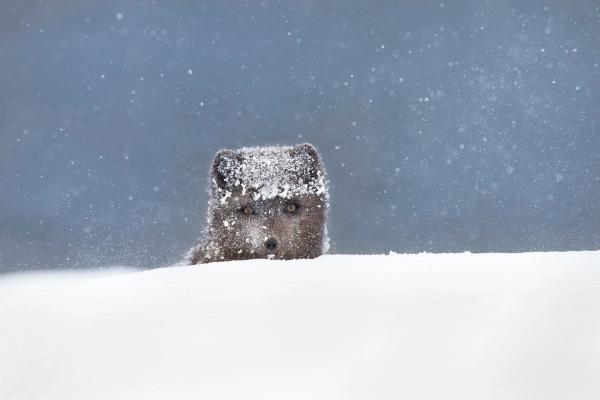
Daylight Hours and Northern Lights
January days in Iceland are really short. In early January, Reykjavík receives only about 4-5 hours of daylight, with the sun rising around 11:30 AM and setting by 3:30 PM.
As the month goes on, daylight increases noticeably (about 5-7 minutes each day). By January 31st, you'll have closer to 7 hours of daylight, with sunrise around 10:00 AM and sunset near 5:00 PM.
The short days mean you need to plan outdoor activities carefully. But the long nights have a huge benefit: perfect conditions for seeing the Northern Lights. January gives you up to 19-20 hours of darkness, which means lots of chances to spot the aurora if the skies are clear.
For the best aurora viewing:
- Check the aurora forecast (online or through apps)
- Look for clear nights without clouds
- Get away from city lights
- Dress super warm – you might be outside waiting for a while
- Remember that auroras don't show up on command, but January gives you some of your best chances
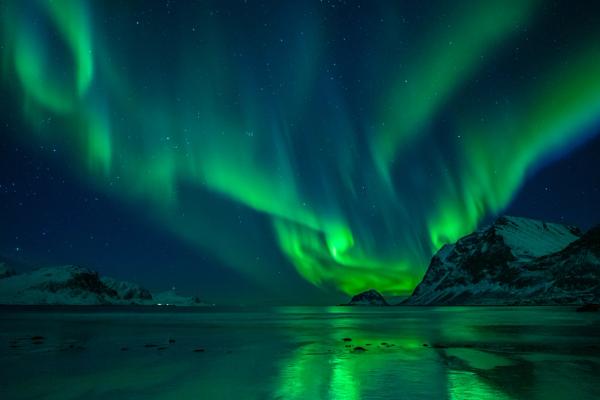
Weather by Region in January
Iceland might be a small country, but the weather can vary dramatically depending on where you are. Understanding these regional differences will help you plan your trip better, from which areas to visit to what kind of road conditions to expect.
Reykjavík and Southwest Iceland
The capital area has the mildest January weather in Iceland. The North Atlantic keeps temperatures just around freezing. Precipitation switches between rain and snow, so you might not always see snow on the ground.
Reykjavík gets hit by many Atlantic storms, making it one of the windiest parts of Iceland in January. These winds can feel brutal when mixed with rain or wet snow.
The southwest is generally the easiest region to travel in winter, with major attractions like the Golden Circle usually open throughout January.

North Iceland and Akureyri
Northern Iceland gets true winter conditions in January. Temperatures remain colder, precipitation mostly falls as snow, and the landscape remains white throughout the month.
Akureyri, tucked into a fjord, gets some shelter from the worst winds, but still has strong gusts during storms. The surrounding countryside often has great snow for winter activities like skiing and snowmobiling.
Lake Mývatn, one of north Iceland's highlights, turns into a winter wonderland with its weird lava formations covered in snow and ice.
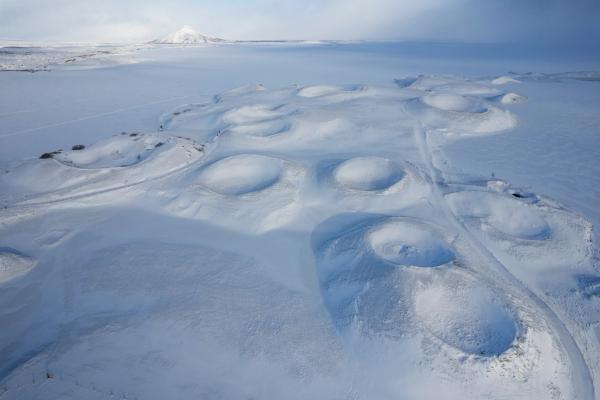
South Coast and Jökulsárlón Glacier Lagoon
The South Coast receives a significant amount of precipitation in January, often alternating between rain and heavy snow. Temperatures usually hover around freezing, but can go up or down.
This region is renowned for its impressive waterfalls, such as Seljalandsfoss and Skógafoss, which can partially freeze in January, creating stunning ice formations. The black sand beaches at Reynisfjara are striking against the backdrop of snow and ice.
Jökulsárlón Glacier Lagoon is especially beautiful in winter, with bright blue icebergs floating in dark waters. The nearby Diamond Beach, where ice chunks wash up on black sand, looks amazing in the low winter light.
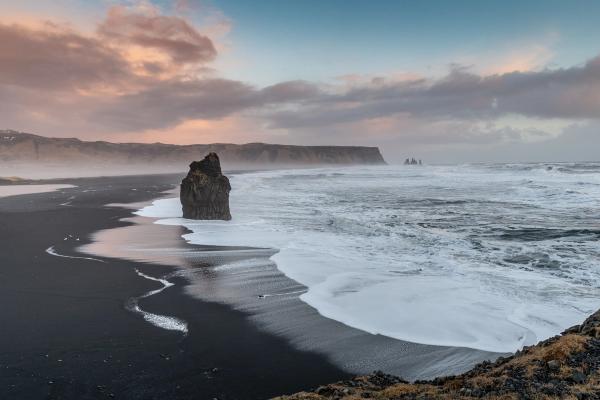
East Iceland
The East Fjords can get some of January's heaviest snowfall. The mountains create their own weather patterns, sometimes trapping storms in the narrow fjords.
In January 2025, East Iceland was hit with extreme snowfall - Dalatangi measured 90cm on January 20th, which was the deepest January snow recorded there since measurements began in 1966. Similar record depths were seen in Neskaupstað (85cm) and Seyðisfjörður (74cm).
The mix of snow-covered mountains dropping straight into the sea creates stunning winter views, but also makes this region tough for winter travel.
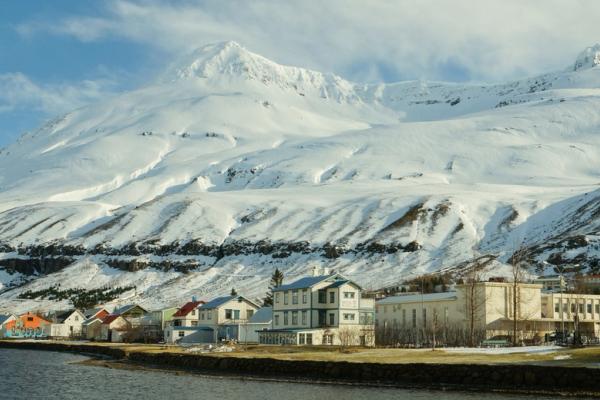
Icelandic Highlands and Ring Road Conditions
The Highlands are basically closed in January. F-roads (mountain roads) stay shut all winter, and conditions would be extremely dangerous even if they weren't.
The Ring Road (Route 1), which goes around the island, usually stays open in January but may close temporarily during severe storms, especially in the north and east. Always check road conditions at road.is before heading out, as closures can happen quickly.
Winter driving in Iceland needs special care. Roads are often icy, visibility can drop fast during snow, and strong winds can make driving hard, especially on exposed stretches.
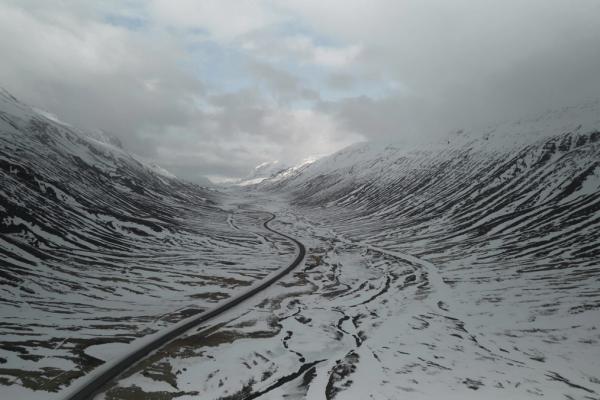
Recap of the Weather in January 2025
Last January (2025) was colder than normal across Iceland, especially in the northeast, where some stations recorded their lowest January temperatures of the 21st century.
Surprisingly, it was one of the calmest Januarys on record. Winds were 1.2 m/s below the usual average nationwide.
The month had a wild mix of conditions. Mid-month, a warm spell with heavy rain caused major flooding as snow melted rapidly. Rivers burst their banks and flooded roads and fields in many places. Then East Iceland got buried in extreme snowfall. Dalatangi measured 90 cm on January 20th, which was the deepest January snow recorded there since measurements began in 1966!
Reykjavík averaged -0.4°C (colder than normal) and had 19 days with full snow cover, which is 7 more than average. Akureyri was even colder at -3.0°C with 26 snow-covered days.
The most extreme temperatures ranged from a freezing -25.9°C at Möðrudalur to a surprisingly warm +15.6°C at Dalatangi.
The month ended dramatically with a major storm on January 31st that brought gale-force winds, avalanches, and severe travel disruptions across the country.

What to Pack for Iceland in January
Packing right for Iceland in January can make or break your trip. The right gear keeps you comfortable and safe in challenging winter conditions, while missing essentials could leave you cold, wet, and miserable. Here's everything you should bring to stay warm and dry during your winter adventure.
Clothing Layers
The key to staying comfortable in Iceland's January weather is layering. This lets you adjust to changing conditions and indoor heating.
- Base layer: Start with thermal underwear – merino wool is great as it keeps you warm and doesn't get smelly.
- Mid layer: Add warm layers like fleece jackets or wool sweaters. Several thinner layers often work better than one thick layer.
- Outer layer: Top it off with a windproof and waterproof jacket and pants. Wind protection is super important in Iceland.
Cold Weather Accessories
These small items make a huge difference in winter comfort:
- A warm hat that covers your ears
- A scarf or neck gaiter to protect your face from the wind
- Gloves or mittens (waterproof ones for outdoor activities)
- Hand warmers for extra cold days
Footwear
Your feet need serious protection in January:
- Waterproof, insulated boots with good grip
- Wool socks (bring several pairs)
- Crampons or ice spikes that fit over your boots for walking on ice
Other Important Stuff
Don't forget these winter essentials:
- Headlamp or flashlight (remember, it's dark most of the day)
- Swimsuit for hot springs and pools (yes, even in winter!)
- Sunglasses (low winter sun and snow glare can be intense)
- Moisturizer and lip balm (cold winds dry out skin)
- Thermos for hot drinks on the go

Best Activities for Iceland's January Weather
January offers unique experiences you won't find in other seasons:
- Northern Lights hunting - Make the most of the long, dark nights for aurora viewing.
- Ice cave tours - Natural ice caves within the glaciers are only accessible during winter, offering stunning blue chambers to explore.
- Hot springs soaking - There's nothing like sitting in a 38°C geothermal pool while surrounded by snow. The Blue Lagoon is famous, but there are many others around the country.
- Winter photography - The combination of snow, ice, and low-angle winter light creates ideal conditions for photography.
- Glacier hiking - With proper guides and gear, you can walk on Iceland's amazing glaciers.
- Snowmobiling - Speed across snowfields and glaciers for an adrenaline rush.
- Winter festivals - Icelanders know how to brighten the dark season with events throughout January.
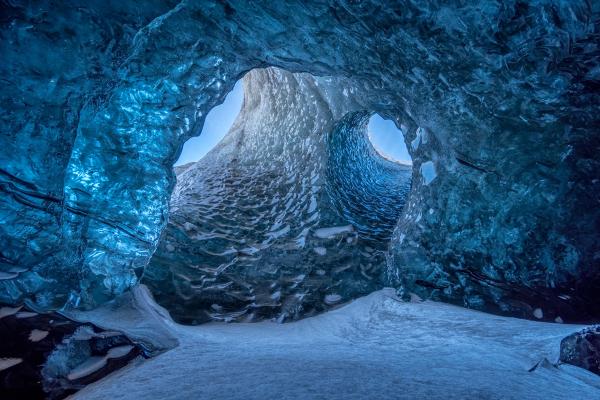
Conclusion
January in Iceland is a mix of challenges and magic. You'll deal with long, dark nights, but also enjoy cozy, short days with beautiful, golden light. Weather can be tough – cold winds, snow, and storms happen often – but the landscapes are stunning, with icy waterfalls, snow-covered volcanoes, and northern lights in the sky.
Come prepared with good winter clothing, a flexible schedule, and respect for the weather's power. If you do, January in Iceland will reward you with fewer crowds, surreal landscapes, and experiences you can only have in winter.

